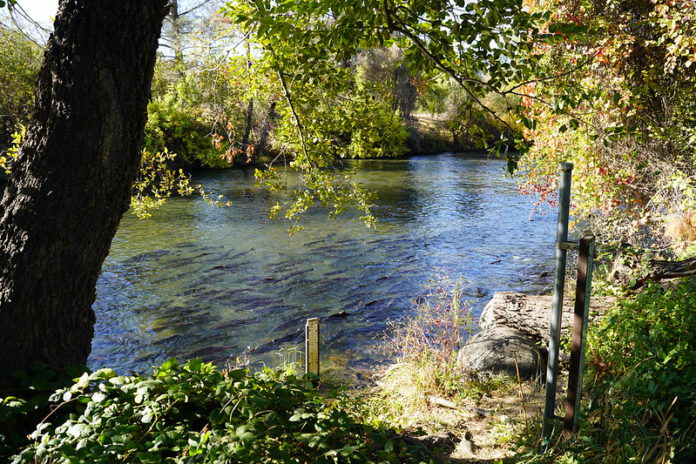
ANDERSON – The Coleman National Fish Hatchery, funded by the Bureau of Reclamation, hatched an additional two million juvenile fall-run Chinook salmon this past October, successfully releasing 600,000 fish this past week with the remainder scheduled to be released the first week of January.
The Golden State Salmon Association proposed the project to U.S. Fish and Wildlife Service and NOAA fisheries last spring.
“This project will allow us to study the potential of generating additional adult returns to spawn naturally in the Sacramento River by releasing fry,” said Paul Souza, Regional Director for the Service’s California Great Basin Region. “We’re excited to provide these additional salmon to increase recreational opportunities for fishermen and women here in California.”
The fish will be released into the upper Sacramento River as fry, with the hope they will imprint as they rear and then return to spawn in the upper Sacramento as adults. There has been a steady decline in natural spawning in the upper Sacramento River over the past decade. This study is an attempt to determine if hatchery-produced fish can be used to increase the natural spawning population.
“We appreciate our partnership with the Service and NOAA Fisheries and are pleased to support this effort to increase salmon populations in the Sacramento River,” said Reclamation Regional Director Ernest Conant.
The fry will be too small at the time of their release to be clipped and tagged with conventional coded wire tags, so novel technology is being used. Tissue samples have been taken from adult parent salmon which will be compared to tissue taken three years from now to identify salmon by matching DNA when they return as adults. Tagging is necessary to evaluate the effectiveness of hatchery production programs, determine rates of survival, and calculate how many hatchery-spawned adults “stray” from their natal streams.
“This project is a great example of government agencies and fishing groups working together to evaluate options for addressing some of the ongoing and long-term effects of the drought that have reduced in-river salmon production and fishing opportunities. This is a model opportunity to apply creative scientific approaches for effective understanding of project benefits,” said Cathy Marcinkevage, Assistant Regional Administrator at NOAA Fisheries West Coast Region.
A key question researchers hope to answer is how many of these small salmon survive to adulthood and where will they return as adults.
“GSSA is grateful to the U.S. Fish and Wildlife Service and Coleman National Fish Hatchery for doing this work which may lead to increased wild spawning in the Sacramento River, thereby adding more fish,” said John McManus, president for the Golden State Salmon Association. “It will be a tremendous benefit.”



